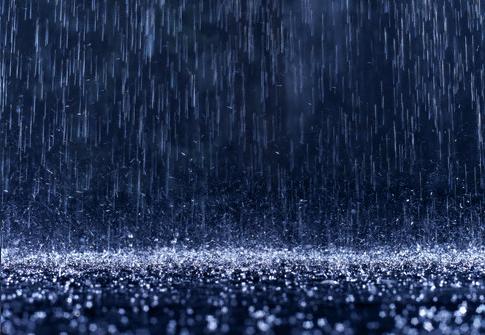Another reflection post from “How to Read Literature Like a Professor” by Thomas C. Foster. This book is beyond enlightening and fun to read! Chapter 10: one of many chapters on how something so small and seemingly unimportant actually contributes to the text in more ways than meets the eye. First – communion. Who thought a group of people sitting around a table, enjoying a meal, having a good time, meant more than just that? All this deeper meaning stuff. That’s what successful literature is all about.
Now there’s weather. According to Foster and common sense regarding literature, weather can and most likely will affect the outcome of a piece of literature or even answer one of the most asked questions of all time: “What will happen next?” (Directly according to Foster, from an author’s standpoint, depending on how you make it known, the current weather circumstances can make or break a book). Foster focuses primarily on rain in this chapter. Whether you’re just getting started on the classics or if you’ve read every Dickens tale out there, you should be able to understand rain: what it is. What it causes us to feel. How it affects the environment that we live in. This goes for everything that rains down from above, including rain, sleet, lightening, fire in some stories, but like I said, Foster shows his love for rain. Rain is understood to compare to feelings of dreariness, sadness, or woe, but Foster takes it one step further, and ends up throwing something at me I never even saw coming.
While reading the first part of the chapter, I found myself nodding in agreement and even wanting to tell Foster, “I know all of this! It’s all obvious information.” But after getting through all of the “rain is scary and rain is sad”, Foster says, “Rain, though, can do a lot more.” I was almost certain that he covered it all with the allusions to the bible and the popular effect that rain has on any story, but he wasn’t even near finished. After looking critically at the effects of rain, it all came together and even made sense in comparison with the real world as opposed to the worlds posed through literature. I read that rain could be used as a plot device and that it (obviously) has an effect on the atmosphere, and I also read about something that Foster calls the “misery factor”. The “misery factor” basically states that when you, as an author, are wanting your characters to feel most miserable, then you throw some rain on them. I think we can all agree that rain has a pretty high misery factor. Something else that Foster said that contradicts everything he’s said thus far is that rain can be restorative and that it is the main cause of spring. It sounds contradicting but rain is one of those things that can have many different effects depending on who is being affected. Again, rain is the main cause of spring, and rain leaves behind some pretty hard evidence that makes this obvious: April showers bring May flowers, so – Rain equals spring and flowers and sunshine! Therefore adding to the restorative property of rain. Rain also keeps you and I alive. Also adding to its restorative property. Rain is the condensed moisture of the atmosphere falling visibly in separate drops… also known as water, and as human beings, we need water to live. Therefore rain is good, yet sometimes it can be bad. Spring also carries with it a number of positive affects, and rain causes spring to come into our lives each and every year.
We can’t talk about rain without rainbows coming into play. A beautiful display of the colors of the spectrum produced by dispersion of light that normally occurs after a rainstorm. Sure, it takes one hell of a rainstorm for a rainbow to be visible afterwards, but I’d say it’s worth it. In books, I had always connected rain to sadness and misery, and the oh-so-cliché, “it was a dark and stormy night” doesn’t help aid in rain’s plea to be noticed as “good” either. I had no clue that the effects of rain in literature ranged so widely from the “misery factor” to restorative properties. After finally realizing that rain affected a piece of literature in so many different ways, I could hardly imagine the effects of any other kind of weather on a piece of literature, but Foster scratches the surface of how fog and snow might stereotypically affect literature, but Foster ultimately leaves it up to the reader to decide how else fog and snow and other weather patterns may affect literature.
Foster says, “Snow… can mean as much as rain” (Foster, 80). Since rain is snow, just in a solid form, this wasn’t shocking. What was shocking was the huge difference between rain and snow. Snow had a much larger range of positive effects on literature as opposed to rain, but again, it depends on who the weather is affecting and how it affects them. For example, in “The Lion, the Witch, and the Wardrobe” by C.S. Lewis, no amount of “positive” can be used to describe the snow that covers Narnia, the land that had been taken over by the White Witch. The snow isn’t even supposed to be there, at least not throughout the whole year, as it is now. The White Witch had control over Narnia, causing winter to occur all year-long. This is one example of snow carrying a negative connotation in literature.
Weather in literature was something I never paid really close attention to; it was just something else happening in the background of a story. Little did I know, the weather was affecting every character in the book and it even helped sway the outcome of the story.
